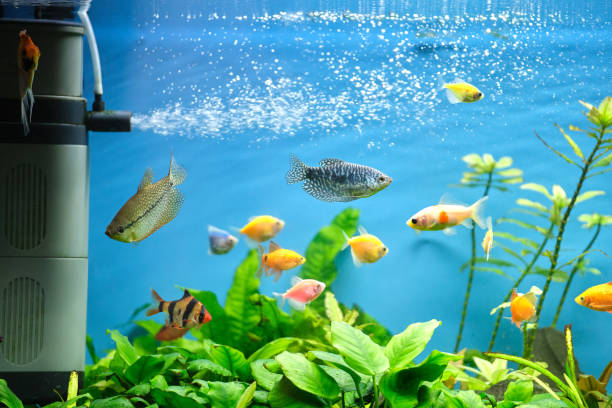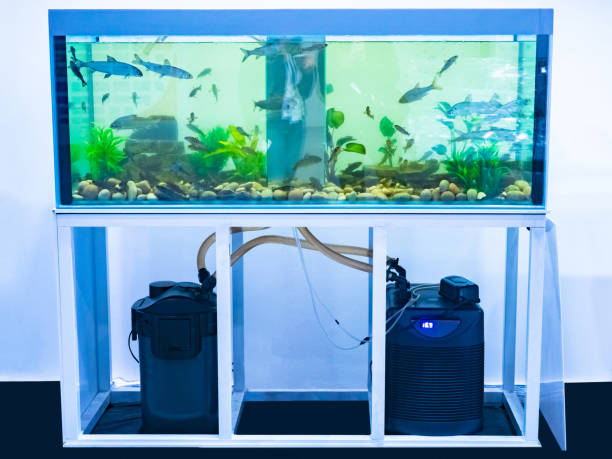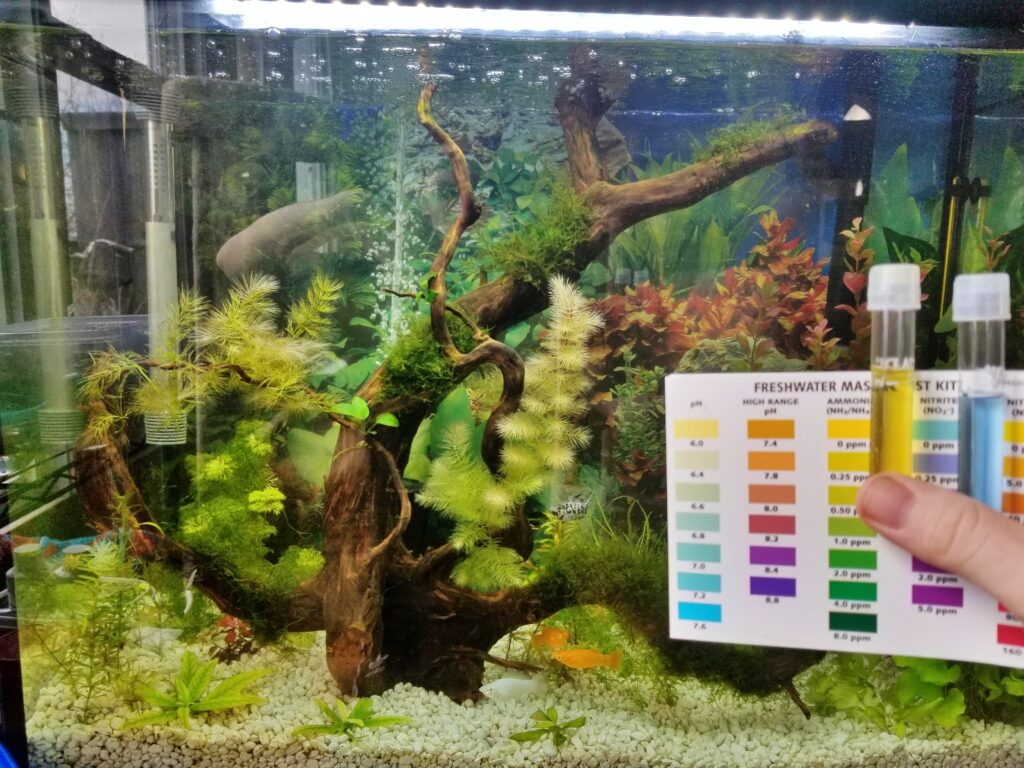The journey of picking out the perfect tank for your fish is very exciting. However, a crucial aspect of this journey is understanding the concept of tank cycling and what it entails. Aquarium cycling is perhaps the most critical step in creating a healthy ecosystem for your underwater pets. There are lots of factors that affect how long it takes to cycle an aquarium, understanding these factors and the nitrogen cycle can help you shorten this time.

Aquarium fish need a world of microorganisms and continuous biological filtration to create a balanced ecosystem for survival. Nature creates this environment through a process called the nitrogen cycle. If you are about to own a brand-new fish tank setup, here’s what you need to know about tank cycling.
What is Tank Cycling?
Tank cycling, otherwise known as the nitrogen cycle, involves the breakdown of toxic waste products in your tank and transforming them into less harmful substances. This process involves adding beneficial bacteria to your tank, enabling the bacteria to spread across all bio-filters and keep up with the amount of ammonia produced by fish.
Ammonia is a major fish waste product, and its toxic nature begs the need for an appropriate filtration system to keep your pet safe.
The first group of bacteria consumes the toxic waste product, converting it to nitrite, while the second bacteria group converts the nitrite into nitrate, a less harmful byproduct that can be removed easily. This conversion system makes up the core of the biological filtration system in your tank.

Factors Influencing Cycling Time
- Tank size: Generally, larger tanks need more time than smaller ones.
- Water Temperature: The ideal temperature for cycling is between 77-86°F(25-30°C).
- Presence of live plants: This helps reduce the level of toxic substances.
- Using seeding material can help speed up the process, reducing the cycling time.
Different Methods of Cycling
Fish keepers apply different fish tank cycling methods. Here are some of the most effective ways to cycle your tank
- Method One: Fishless cycling method
The fishless cycling method is more time-consuming and a more popular way of cycling your aquarium. The first step is to set up the components of your tank, after which you check the pH of the water in your tank using pH test strips.
The ideal pH should range from 7.0-7.8. The third step is to add some ammonia to the tank since this is a key ingredient of this cycle. This can be done by adding fish food. Check the levels of ammonia, nitrite, and nitrate once the fish food decays. You can then slowly incorporate your fish into the tank.
- Method Two: Cycling with fish
The process of cycling with fish is quite similar to cycling without fish. The major difference is that a few hardy fish are added to the tank before the cycling process begins.
Change about 10-20% of the tank water twice every week to help regulate the level of contaminants in the tank. While changing the water, monitor the contaminant levels until the nitrate level is consistent and the others are undetectable.
- Method Three: Cycling using pre-seeded media
This method involves adding pre-seeded media to the tank from another aquarium that has already been cycled and contain beneficial bacteria. Run the tank with the media for a few days before adding a few fish. If the contaminant levels are appropriate after a week, add a few more fish.
Choosing the best of these aquarium cycling techniques depends on your preference.

Typical Timeframes for Tank Cycling
The ideal tank cycling time depends on several factors, as explained above. Most tanks’ general aquarium cycling duration takes approximately 2-6 weeks. This covers all cycling stages from the initial conversion of ammonia to nitrite and nitrate. The fish tank setup time is also vital in the timeframe, as each cycling technique and personal preferences will add time to the process.
Signs Your Tank is Fully Cycled
A fully cycled tank is important for the survival of your fish. How can you tell if your fish is fully cycled?
This is done by checking your tank’s ammonia and nitrite levels, ensuring they are at zero, and confirming nitrate presence. To perform these tests, you need aquarium test kits that can detect nitrate and other contaminants. These test kits are used for water testing and are very affordable.
Tips to Speed Up the Cycling Process
You can significantly speed up tank cycling by using nitrifying bacteria, transferring used filter media from an old aquarium, or incorporating live plants into your tank. When looking for more aquarium cycling tips, the key is to ensure optimal water conditions for your fish.
Common Mistakes to Avoid
It’s easy to fall prey to tank cycling mistakes during this process. Taking note of a few of these fish tank cycling pitfalls is the best way to avoid them. Some of the mistakes to avoid include:
- Adding the fish too soon
- Overeating
- Overstocking
- Failure to fix aquarium set-up errors
Pay more attention to aquarium maintenance tips to give your pets the best care.
Can you add fish to a tank while it’s cycling?
When it comes to adding fish during cycling, it is recommended to add small amounts of fish at a time. If you are cycling with fish in the tank, starting with about 2-3 fish is also important. Checking your fish health during cycling process is also vital.
What are the best bacteria supplements for cycling a tank?
Bacteria supplements are one of the best ways to encourage tank cycling. These tank cycling supplements act as beneficial bacteria; some of the best choices are the Tetra SafeStart Plus, BIO-Spira, and Fluval Cycle. There are many more accessible aquarium bacteria products out there, so you should choose the best-suited product.
Do water changes affect the cycling process?
Water changes during cycling don’t particularly harm your fish; in fact, they are necessary for fish-in-tank cycling. Performing an aquarium water change may remove some beneficial bacteria, but it is not significant enough to ruin the balance.
Conclusion
Aquarium cycling is vital in setting up a healthy fish tank for your little friends. This provides optimum living conditions for these underwater animals even after a proper aquarium setup. Following cycling guidelines and understanding the importance of tank cycling helps prepare a welcoming home for your new fish.




